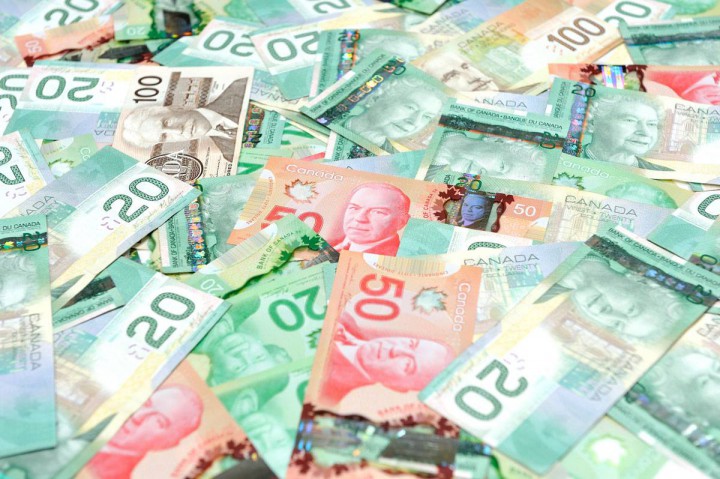Updated April 5, 2017

Sixty-six percent of Canadian tax filers will get money back this year, with refunds averaging $1,620, according to data based on returns processed up until April 5.
Many Canadians are waiting for that cash with trepidation — and it’s easy to see why. What’s not to like about a fat cheque from the Canada Revenue Agency?
Actually, a lot, according to tax advisers.
READ MORE: Here are the Canadians most likely to get a tax audit this year
Instead of handing that money to the CRA only to get it back in May, you could have invested it and earned a return on it.
Getting a big tax refund year after year isn’t something to be cherished, it’s a sign you could use better tax planning, said De Luca.
WATCH: Tax refund – spend or save?
Ideally, you should aim for a refund or balance owing of $200 or less at the end of the tax year, he added. That means you’ve been taxed just the right amount.
By the time tax season rolls around, though, it’s too late to worry about that.
“There’s often this misconception that a tax return can somehow be manipulated to get a better a refund,” said De Luca. “But when you’re preparing a tax return, all you’re doing is recording history.”
READ MORE: The 4 things you should never do with your tax refund
If you want to stop the government from over-taxing you, you need to take action at the start of the year:
Check your T4 withholding
If you’re a regular employee who gets a T4 income slip, make sure your employer is withholding the proper amount from your pay. Filling out a TD1 form will give your payroll department a good idea about how much you’ll be claiming in federal and provincial tax credits.
- Roll Up To Win? Tim Hortons says $55K boat win email was ‘human error’
- Bird flu risk to humans an ‘enormous concern,’ WHO says. Here’s what to know
- Halifax homeless encampment hits double capacity, officials mull next step
- Ontario premier calls cost of gas ‘absolutely disgusting,’ raises price-gouging concerns
The form, provided by the CRA, looks at things like whether you’re financially supporting your spouse, paying tuition fees, or will be receiving pension income. It gives your employer a pretty accurate idea of how you’ll be filling out your tax return and adjust your payroll withholding accordingly.
READ MORE: Can’t afford to pay your tax bill? Here’s what you can do
Employers don’t have to hand out a TD1 to new employees, but they should, said De Luca. And while most large companies do, some small businesses don’t, he added.
If you haven’t received a TD1, you can request one.
If you experience a life event that affects your T4 withholdings — say, your spouse gets a job and you’re no longer supporting them — make sure to keep your employer updated.
You should also advise payroll of whether you have more than one employer in the same tax year. For example, if you’re a new hire and have worked at a different company for part of the year, you might have already earned the first $11,600 or so that is exempt from tax for every Canadian resident (something known as the basic personal amount).
If your new employer assumes you’ll be claiming the basic personal amount, you’ll be undertaxed and could face a hefty tax bill come tax-filing time.
READ MORE: What the CRA can and can’t do with your data and social media accounts
Ask the CRA to allow your employer to withhold less tax
If you’ve made a large contribution to your Registered Retirement Savings Plan (RRSP), you can ask the CRA to allow your employer to withhold less tax from your paycheque for the year instead of claiming a large deduction on your tax return, De Luca said.
Another scenario in which you might want to plead with the CRA for less tax is if you have unusually large childcare costs that are tax deductible, said De Luca.
In general, the CRA will authorize any legitimate request if you have the paperwork to backup your claims, he added.
And once the agency has given you the green light, let your employer know.
READ MORE: Why the CRA waives penalties on many Canadians who admit they didn’t pay taxes
If you’re self-employed, take a minute to do some basic math
Self-employed professionals and small business owners are often “so busy doing their thing that they let the administrative side of things fall to the wayside,” said De Luca.
But the math you need to estimate your taxes when you’re self-employed is often pretty basic, he said: Based on previous years, calculate what your gross revenue and overall expenses are likely to be and subtract the latter from the first.
That will give you a good idea of your yearly tax load, which you should plan to pay in quarterly instalments.
If your income varies a lot from month to month or seasonally, save up to pay future taxes when you’re flush with cash, said De Luca.
READ MORE: Self-employed? Here are 6 steps to get your taxes right
If you’re going to get taxed less, make the most of the extra money
Large tax refunds have one undeniable upside: It’s easy to use that lump sum you get once a year for a big RRSP contribution or to cut down on credit card bills.
WATCH: Ways to use your tax refund wisely
But if you’re going to get money sprinkled through the year via lower taxes, saving or paying down debt with it requires a little more discipline.
“You have to make sure you do something with that cash flow and not just spend it,” said De Luca.




Comments